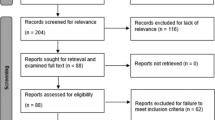Abstract
Study Design
Single-institution, retrospective review of prospectively collected data on pediatric patients with adolescent idiopathic scoliosis (AIS) undergoing spinal fusion with a minimum two-year follow-up.
Objective
To determine the rate of reoperation in AIS patients undergoing spine fusion from 2008 to 2012.
Summary of Background Data
Recent trends in the surgical treatment of AIS have included increased use of all—pedicle screw constructs, smaller implants, more posterior-only approaches, and improved correction techniques.
Methods
A retrospective review of 467 patients undergoing spinal fusion from 2008 to 2012 was performed. Demographic, clinical, radiographic, and surgical data were collected prospectively on all patients for the index procedure and any reoperations. Data were compared to previously published cohorts of patients from the authors’ institution who underwent spinal fusion for AIS between 1988 and 2007.
Results
The rate of reoperation in this five-year cohort of patients was 9.9%. The most common indications for reoperation were infection (4.5%: 2.4% delayed infections and 2.1% acute infections), symptomatic implants (2.1%), and misplaced pedicle screws (1.7%). When compared to the 2003–2007 cohort, the rate of reoperation for acute infection and malpositioned pedicle screws increased significantly (p = .01 and p = .04), whereas the rate of reoperation for curve progression decreased (p = .01). Reoperations for acute infections and malpositioned pedicle screws also increased significantly (p = .047 and p = .042) compared with the 1988–2002 cohort, whereas the rate of reoperation for pseudarthrosis decreased (p = .002).
Conclusion
Reoperation rates for AIS have not improved with more sophisticated implants and techniques, predominantly because of increased acute infections and malpositioned pedicle screws despite decreasing pseudarthrosis rates and curve progression.
Level of Evidence
Level II.
Similar content being viewed by others
References
Richards BS, Hasley BP, Casey VF. Repeat surgical interventions following “definitive” instrumentation and fusion for idiopathic scoliosis. Spine 2006;31:3018–26.
Ramo BA, Richards BS. Repeat surgical interventions following “definitive” instrumentation and fusion for idiopathic scoliosis. Spine 2012;37:1211–7.
Feng B, Shen J, Zhang J, et al. How to deal with cerebrospinal fluid leak during pedicle screw fixation in spinal deformities surgery with intraoperative neuromonitoring change. Spine 2014;39:E20–5.
Dede O, Ward WT, Bosch P, et al. Using the freehand pedicle screw placement technique in adolescent idiopathic scoliosis surgery. Spine 2014;39:286–90.
Samdani AF, Belin EJ, Bennett JT, et al. Unplanned return to the operating room in patients with adolescent idiopathic scoliosis. Spine 2013;38:1842–7.
Wagner MR, Flores JB, Sanpera I, Herrera-Soto J. Aortic abutment after direct vertebral rotation: plowing of pedicle screws. Spine 2011;36:243–7.
Ledonio CGT, Polly DW, Vitale MG, Wang Q, Richards BS. Pediatric pedicle screws: comparative effectiveness and safety: a systematic literature review from the Scoliosis Research Society and the Pediatric Orthopaedic Society of North America task force. J Bone Joint Surg Am 2011;93:1227–34.
Katyal C, Grossman S, Dworkin A, et al. Increased risk of infection in obese adolescents after pedicle screw instrumentation for idiopathic scoliosis. Spine Deform 2015;3:166–71.
Ballard MR, Miller NH, Nyquist AC, et al. A multidisciplinary approach improves infection rates in pediatric spine surgery. J Pediatr Orthop 2012;32:266–70.
Li Y, Glotzbecker M, Hedequist D. Surgical site infection after pediatric spinal deformity surgery. Curr Rev Musculoskelet Med 2012;5:111–9.
Author information
Authors and Affiliations
Corresponding author
Additional information
Author disclosures: MM (none); DT (none); BR (none); BSR (none).
Rights and permissions
About this article
Cite this article
Mignemi, M., Tran, D., Ramo, B. et al. Repeat Surgical Interventions Following “Definitive” Instrumentation and Fusion for Idiopathic Scoliosis: 25-Year Update. Spine Deform 6, 409–416 (2018). https://doi.org/10.1016/j.jspd.2017.12.006
Received:
Revised:
Accepted:
Published:
Issue Date:
DOI: https://doi.org/10.1016/j.jspd.2017.12.006




